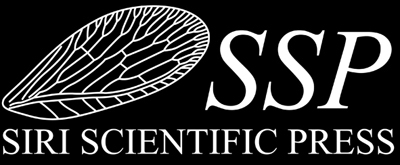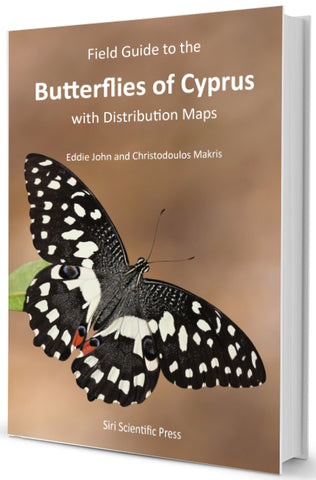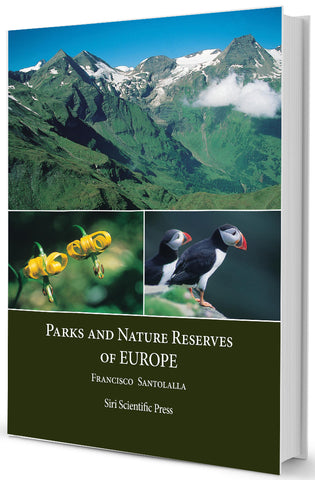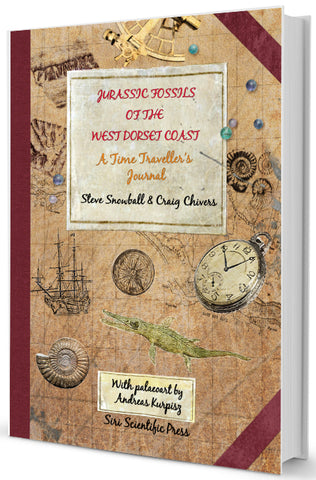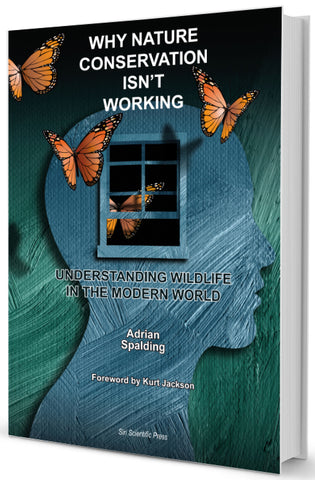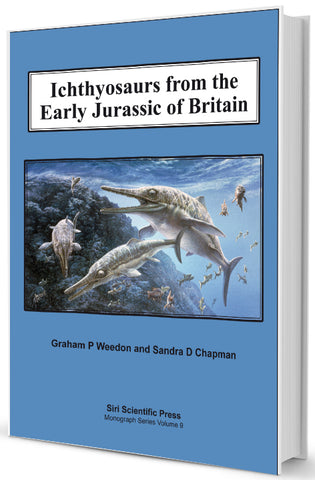
Ichthyosaurs from the Early Jurassic of Britain
by Graham P. Weedon and Sandra D. Chapman
Siri Scientific Press (2022, 1st November) 978-1-8381528-6-4 (MONOGRAPH SERIES VOLUME 9) RRP £99.99
448 pp, 240 x 165 mm, hard cover, 171 multi-part colour photos/illustrations
IN STOCK - Usually ships within 48 hours
Reviews
Proc. Open Uni. Geol. Soc. 2024, 10, 102: A monumental monograph on Britains ichthyosaurs that will serve as the definitive work on the subject for years and should be on the shelves of everyone who studies the Jurassic, amateur or professional. The book is technical but, written fluently with precise, succinct sentences, providing easy reading and is abundantly illustrated with 167 figures. This book is a truly fantastic achievement.
Fossils 2023, 1, 47–48: This book will be an invaluable resource for all palaeontologists with an interest in ichthyosaurs. More than two centuries after the first scientific descriptions, our knowledge of these remarkable marine reptiles has increased enormously, and this volume provides a remarkable and up-to-date synthesis of the historically and scientifically important taxa from the Liassic of Britain. The numerous illustrations, most of them in colour (including the beautiful cover picture by John Sibbick), are of the high standard that is a hallmark of Siri Scientific publications.
Some customer feedback
Super book ... Without a doubt worth the cover price. The authors and publisher should be pleased as punch with this. A great contribution to vertebrate palaeontology. You have inspired me to write a book in my retirement.
The book is beautiful. Lots of colour photographs of specimens and very detailed. I highly recommend this book. I hope this will be a series of books and cover other tetrapods from the Early Jurassic of Britain.
From the back cover
Ichthyosaurs are iconic, extinct, marine reptiles that date from the Mesozoic Era when dinosaurs dominated the land. They formed a key part of marine ecosystems as secondary consumers and in some cases apex predators. Occasionally the preservation of fully-articulated skeletons including exceptionally their soft-parts, allows the reconstruction of many details of ichthyosaur palaeobiology. The Early Jurassic of Britain provides arguably the best-known ~30-million-year portion of their 156-million-year history.
The first part of this book introduces the anatomy of ichthyosaurs, how they were fossilised, how the fossils are curated plus their global distribution in space and time. The second part provides a comprehensive, up-to-date review of all aspects of their palaeobiology including inferences about their genetics. The final part summarizes the characteristics of the twenty-one Early Jurassic species currently recognised in Britain including figures showing their spatial distribution and stratigraphic ranges. Appendices list the key specimens of British Early Jurassic ichthyosaurs. The book is illustrated with 243 colour photographs of ichthyosaur specimens with about forty percent from the Natural History Museum, London.
About the authors
Graham Weedon lectured on palaeontology as well as many other subjects at the University of Luton (now Bedfordshire) from 1992 to 2004. His other research interests include sedimentary cycles and palaeoclimates and his first book was Time-series Analysis and Cyclostratigraphy (Cambridge University Press). He joined the Met Office in 2007.
Sandra Chapman is a Scientific Associate in the Earth Sciences Department at the Natural History Museum following over 35 years as the Curator of the Fossil Reptile and Bird Collections. She worked on the NHM Touring Exhibition ‘Ancient Oceans’ concerning life in the Jurassic seas using rare complete ichthyosaur and plesiosaur skeletons plus CGI. In 2020 she was the NHM consultant for the recent issue of ‘Tales of the Earth’ by the Royal Mint of three collectable coins celebrating the iconic discoveries of Mary Anning. She co-authored Dippy: The tale of a museum icon and is a contributing author to the Palaeontological Association Field Guides to Fossils of Lower Lias of the Dorset Coast and Fossils of the Kimmeridge Clay Formation.
Contents
click here (opens pdf)
Addendum added in press
The specimen Ichthyosaurus conybeari? listed in the Appendix 5: British Genera of Ichthyosaurus & Protoichthyosaurus page 368 and published by Massare et al. (2021: Table 1) as NHMUK PV R 11801 has now been reviewed and a new number has been designated as NHMUK PV R 38005. The authors believe that it is essential that the old 'catalogue number' should not be perpetuated in future research publications.
We Also Recommend
